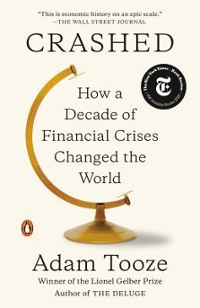Question
Q3: The market for barley is represented by Q = 8,600 - 20P and Q = 30P - 600 where Q is the quantity of
Q3: The market for barley is represented by Q = 8,600 - 20P and Q = 30P - 600 where Q is the quantity of barley measured in tonnes and P is the price of barley per tonne measured in dollars.
Hint: Demand and supply graphs are useful for the following questions. They do not need to be precise and you do not need to submit the graphs.
a) What are the equilibrium price and equilibrium quantity in this market?
b) What does consumer surplus equal when this market is at equilibrium? Show your calculations.
c) What does producer surplus equal when this market is at equilibrium? Show your calculations.
d) What does total economic surplus equal when this market is at equilibrium? Show your calculations.
e) Suppose the government imposes a quota that limits output to 2,400 tonnes of barley. What does consumer surplus equal in this market as a result of the quota? Show your calculations.
f) Suppose the government imposes a quota that limit output to 2,400 tonnes of barley. What does producer surplus equal in this market as a result of the quota? Show your calculations.
g) Suppose the government imposes a quota that limit output to 2,400 tonnes of barley. What does the deadweight loss equal in this market as a result of the quota? Show your calculations.
h) Suppose the government imposes a price floor at $250 per tonne of barley. What does consumer surplus equal in this market as a result of the price floor? Show your calculations.
i) Suppose the government imposes a price floor at $250 per tonne of barley. What does producer surplus equal in this market as a result of the price floor? Show your calculations.
j) Suppose the government imposes a price floor at $250 per tonne of barley. What does the deadweight loss equal in this market as a result of the price floor? Show your calculations.
k) Suppose the government imposes a price ceiling at $140 per tonne of barley. What does consumer surplus equal in this market as a result of the price ceiling? Show your calculations.
l) Suppose the government imposes a price ceiling at $140 per tonne of barley. What does producer surplus equal in this market as a result of the price ceiling? Show your calculations.
m) Suppose the government imposes a price ceiling at $140 per tonne of barley. What does the deadweight loss equal in this market as a result of the price ceiling? Show your calculations.
n) Suppose the government imposes a specific tax of $25 per tonne of barley, which causes the new equilibrium price to be $199 per tonne of barley. What does consumer surplus equal in this market as a result of the tax? Show your calculations.
o) Suppose the government imposes a specific tax of $25 per tonne of barley, which causes the new equilibrium price to be $199 per tonne of barley. What does producer surplus equal in this market as a result of the tax? Show your calculations.
p) Suppose the government imposes a specific tax of $25 per tonne of barley, which causes the new equilibrium price to be $199 per tonne of barley. What does the total tax revenue of the government equal as a result of the tax? Show your calculations.
q) Suppose the government imposes a specific tax of $25 per tonne of barley, which causes the new equilibrium price to be $199 per tonne of barley. What does the deadweight loss equal in this market as a result of the tax? Show your calculations.
Step by Step Solution
There are 3 Steps involved in it
Step: 1

Get Instant Access to Expert-Tailored Solutions
See step-by-step solutions with expert insights and AI powered tools for academic success
Step: 2

Step: 3

Ace Your Homework with AI
Get the answers you need in no time with our AI-driven, step-by-step assistance
Get Started


